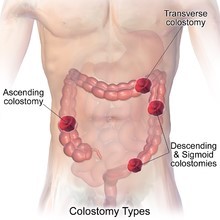A nurse on a pediatric unit is caring for a toddler who has poor dietary intake.
Which of the following actions should the nurse take first?
Encourage the family to be with the child during mealtimes
Obtain the child's dietary history
Offer the child nutritious snacks between meals
Instruct the family to praise the child when they eat
The Correct Answer is B
Correct answer: B
A. Family presence can provide comfort and support to the toddler, making mealtimes a more positive experience. It can also encourage the child to eat more by setting a good example. However, without first understanding the child's dietary habits and possible issues, this intervention might not address the root cause of the poor intake.
B. The nurse’s first action in caring for a toddler with poor dietary intake should be to obtain the child’s dietary history. Understanding the child’s current eating habits, preferences, and any potential barriers to adequate nutrition is essential for planning appropriate interventions. Once the dietary history is obtained, the nurse can tailor further actions based on the specific needs of the child.
C. Offering nutritious snacks can help increase the child's overall calorie and nutrient intake, which is particularly important if the child has a low appetite during regular meals. Nevertheless, this step should follow the assessment of the child's dietary history to ensure that the snacks offered are appropriate and to avoid potential allergies or intolerances.
D. Positive reinforcement can encourage healthy eating behaviors and make mealtime a more enjoyable experience for the child. Praising the child can motivate them to eat more. However, this should be done after understanding the child's eating patterns and preferences to ensure that the praise is given in a context that promotes effective and lasting change.
Nursing Test Bank
Naxlex Comprehensive Predictor Exams
Related Questions
Correct Answer is B
Explanation
Applying pressure with gauze helps to control bleeding and promote clotting. The other statements are not accurate or appropriate for circumcision care: "I will apply antibiotic ointment to my baby's penis" is not recommended for Plastibell circumcision. The use of antibiotic ointment is not typically necessary or recommended unless specifically advised by the healthcare provider.
"I will wipe away yellow crusts that form around the incision" should not be done as it may disrupt the healing process. Yellow crusts are a normal part of the healing process and should be left undisturbed.
"I will make sure that my baby's diaper is applied snugly" is unrelated to circumcision care. While proper diapering is important for maintaining hygiene, it does not specifically address the care of the circumcision site.
Correct Answer is ["C"]
Explanation
A. Create an opening on the skin barrier that is 1.27 cm (0.5 in) larger than the client's stoma.The opening on the skin barrier should be cut to fit closely around the stoma, approximately 0.3-0.6 cm (1/8 to 1/4 inch) larger than the stoma size. A larger opening (like 0.5 inches) could expose too much surrounding skin, increasing the risk of skin irritation from contact with the stoma's effluent.
B. Use a moisturizing soap to clean the skin around the client's stoma.Moisturizing soaps should be avoided because they can leave a residue on the skin, which may interfere with the adhesion of the ostomy appliance. The skin around the stoma should be cleaned with mild soap and water, or water alone, and then dried thoroughly before applying the new appliance.
C. Empty the client's ostomy pouch before removing the skin barrier.Emptying the ostomy pouch before removing the skin barrier is a practical step to reduce spillage of stool during the appliance change, making the process cleaner and easier to manage. It also minimizes the risk of contamination of the surrounding area or wound.
D. Change the client's ostomy appliance 1 hour after breakfast.Ostomy appliances are best changed when the bowel is least active, which is usually before a meal or several hours after eating. Changing the appliance shortly after a meal, such as 1 hour after breakfast, may result in more stoma output, making it harder to manage the appliance change.

Whether you are a student looking to ace your exams or a practicing nurse seeking to enhance your expertise , our nursing education contents will empower you with the confidence and competence to make a difference in the lives of patients and become a respected leader in the healthcare field.
Visit Naxlex, invest in your future and unlock endless possibilities with our unparalleled nursing education contents today
Report Wrong Answer on the Current Question
Do you disagree with the answer? If yes, what is your expected answer? Explain.
Kindly be descriptive with the issue you are facing.
